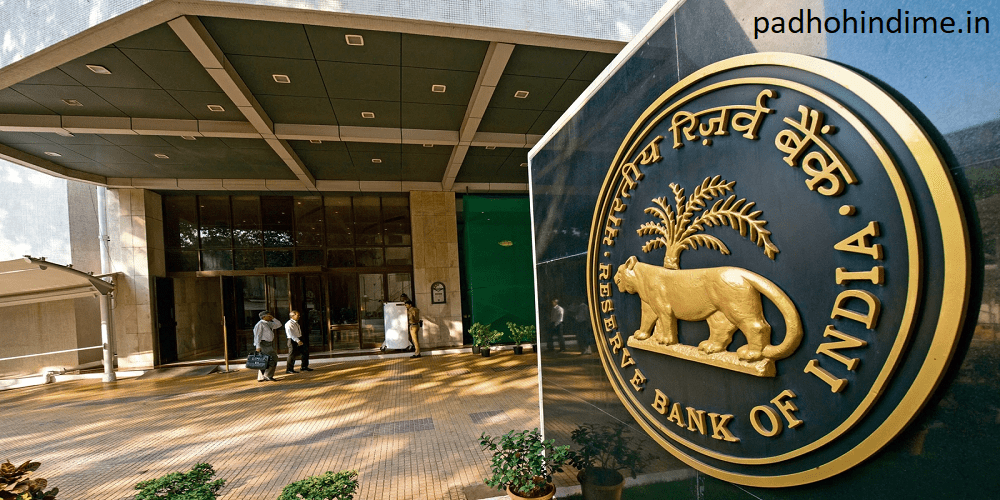About RBI.
The Reserve Bank of India (RBI) is the central bank of India. It is the apex monetary authority responsible for the regulation and supervision of the country’s banking and financial system. The RBI was established on April 1, 1935, in accordance with the Reserve Bank of India Act, 1934.
Power And Function Of President
The primary objective of the RBI is to maintain price stability and ensure the stability and soundness of the financial system in India. It formulates and implements monetary policy, manages foreign exchange reserves, issues currency, regulates and supervises banks and other financial institutions, and promotes the development and efficiency of the financial system.
Here are some key functions and responsibilities of the RBI:
- Monetary Policy: The RBI formulates and implements monetary policy in India. It aims to control inflation, stabilize prices, and promote economic growth. The RBI uses various tools, such as adjusting interest rates and reserve requirements, to manage money supply and credit conditions in the economy.
- Currency Issuance: The RBI has the sole authority to issue currency notes in India. It ensures an adequate supply of currency and manages the process of currency circulation, including the distribution of banknotes and coins throughout the country.
- Banker to the Government: The RBI acts as a banker and debt manager to the central and state governments. It manages their accounts, facilitates government transactions, and issues government securities on their behalf.
- Banking Regulation and Supervision: The RBI regulates and supervises banks and financial institutions operating in India. It sets prudential norms, guidelines, and regulations to ensure the safety and stability of the banking system. The RBI also conducts inspections, audits, and assessments to monitor compliance and address risks.
- Foreign Exchange Management: The RBI manages India’s foreign exchange reserves and formulates policies to maintain stability in the exchange rate. It intervenes in the foreign exchange market to manage the value of the Indian rupee against other currencies.
- Developmental Role: The RBI plays a developmental role by promoting financial inclusion, encouraging banking and financial sector reforms, and fostering the development of efficient payment and settlement systems. It also provides refinancing facilities and special lending programs to support priority sectors of the economy.
- Data Compilation and Research: The RBI collects and publishes data related to various aspects of the economy, including monetary aggregates, financial markets, and banking statistics. It conducts research and analysis to enhance understanding of economic and financial issues and supports evidence-based policy-making.
- Financial Stability and Crisis Management: The RBI monitors and assesses the overall stability and resilience of the financial system. It formulates policies and frameworks to manage and mitigate systemic risks. In times of financial crises, the RBI plays a crucial role in maintaining stability and managing disruptions.
Overall, the Reserve Bank of India plays a vital role in maintaining monetary stability, promoting financial sector development, and ensuring the overall health and resilience of the Indian economy.
How RBI Earns Money.
The Reserve Bank of India (RBI) earns money through various mechanisms and functions it performs as the central bank of the country. In this explanation, we will explore the primary sources of RBI’s earnings and the mechanisms through which it generates revenue.
- Monetary Policy Operations: The RBI conducts monetary policy operations to manage the money supply in the economy. One of the key tools it uses is the repo rate, which is the interest rate at which it lends to commercial banks. By adjusting this rate, the RBI influences borrowing costs, liquidity in the banking system, and ultimately the money supply. When the RBI lends to banks through repo operations, it earns interest income on the loans.
- Foreign Exchange Reserves: As the custodian of India’s foreign exchange reserves, the RBI manages and invests these reserves to maintain stability in the currency exchange rates. The central bank earns income through the interest and returns generated from these investments.
- Currency Issue: The RBI has the sole authority to issue currency notes in India. It earns a seigniorage income, which is the difference between the face value of the currency notes and the cost of producing them. The RBI also replaces old and damaged currency notes, which results in a small profit.
- Government Securities: The RBI acts as an agent for the central and state governments in managing their borrowing requirements. It conducts auctions of government securities (bonds) on behalf of the government and earns income in the form of interest payments on these securities.
- Banking Services to the Government: The RBI provides various banking services to the central and state governments, such as maintaining their accounts, managing government transactions, and acting as a banker to the government. It earns service charges and fees for these services, which contribute to its revenue.
- Supervision and Regulation: The RBI plays a crucial role in supervising and regulating the banking and financial sector in India. It collects fees and charges from banks and other financial institutions for services such as licensing, registration, and regulatory compliance. These fees form a significant part of the RBI’s income.
- Investments and Dividends: The RBI holds investments in various financial instruments, including government securities, corporate bonds, and equity shares. It earns income from interest, dividends, and capital gains on these investments. Additionally, the RBI pays dividends to the government from its surplus profits after meeting its operational and reserve requirements.
- Payment and Settlement Systems: The RBI operates payment and settlement systems, such as the Real-Time Gross Settlement (RTGS) and National Electronic Funds Transfer (NEFT). It earns income by charging fees for these services, which include transaction charges, membership fees, and penalties for non-compliance.
- Research and Consultancy: The RBI conducts economic research, provides policy advice, and offers consultancy services to various institutions, both domestic and international. It charges fees for these services, contributing to its revenue.
- Other Sources: The RBI may earn income from other sources such as interest on loans to banks, penalties levied for regulatory violations, and income from its subsidiaries and joint ventures.
In conclusion, the Reserve Bank of India earns money through various channels, including monetary policy operations, foreign exchange reserves, currency issue, government securities, banking services to the government, supervision and regulation, investments and dividends, payment and settlement systems, research and consultancy, and other sources. These diverse revenue streams enable the RBI to carry out its functions effectively and maintain financial stability in the Indian economy.





Pingback: Biography Of Dhruv Rathee - Padho Hindi Me
Pingback: 10 Lessons From Bhagavad Gita - Padho Hindi Me